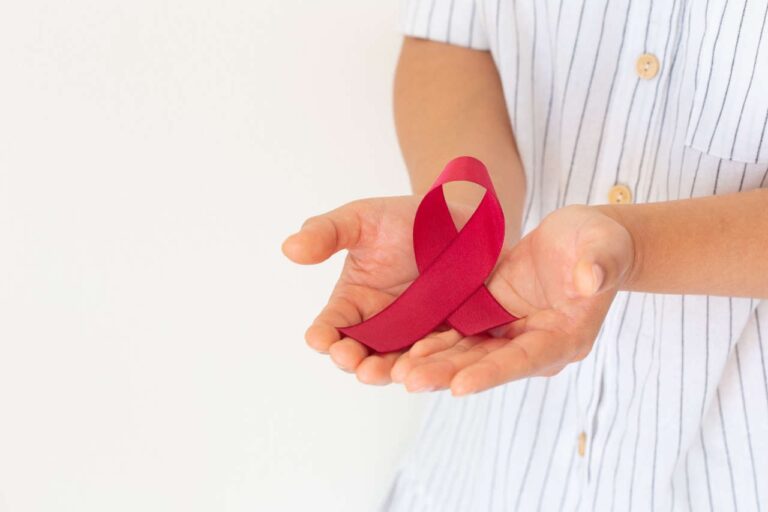
Ziextenzo (generic name: pegfilgrastim-bmez), is an FDA-approved medication used to treat or prevent febrile neutropenia. It is used in cancer patients with non-myeloid malignancies who are receiving myelosuppressive chemotherapy medications. Neutropenia is a condition in which patients have an abnormally lower level of neutrophils — a type of white blood cell that is needed to fight infections. In the case of febrile neutropenia, the low level of neutrophils is accompanied by a fever.
Get Chemotherapy Copay Assistance
Chemotherapy Financial AssistanceChemotherapy-induced neutropenia is brought on because chemotherapy cannot differentiate between healthy and malignant cells. It will attack and destroy cancer cells but may also damage healthy cells, including neutrophils, in the process. This decrease in neutrophils causes neutropenia, thus making patients extremely susceptible to serious and possibly fatal infections.
Ziextenzo is indicated to decrease the occurrence of infections by transiently increasing the neutrophil levels in cancer patients. It is administered subcutaneously (under the skin) following each cycle of chemotherapy.
Ziextenzo is currently only available as a solution in prefilled syringes (0.6 ml of Ziextenzo solution in each syringe for a single dose) and requires a doctor’s prescription.
Mechanism of Action
Ziextenzo contains the active ingredient, pegfilgrastim, which is similar to human granulocyte colony-stimulating factors (G-CSFs). G-CSFs are a type of glycoprotein that is produced naturally in the bone marrow and stimulates the production and release of neutrophils from the bone marrow to the bloodstream under normal conditions.
Chemotherapy has a significant impact on neutrophil production. The active ingredient in Ziextenzo, pegfilgrastim, binds to specific surface receptors on bone marrow cells, stimulating increased neutrophil production. As a result, individuals undergoing such treatments are less likely to develop infections.
Ziextenzo Uses
Currently, Ziextenzo is FDA-approved for treating non-myeloid malignancy cancer patients who have febrile neutropenia caused by myelosuppressive chemotherapy.
Ziextenzo vs. Neulasta
Ziextenzo is the third biosimilar of Neulasta (an existing FDA-approved medication in the market). Neulasta is a biological medication that is complex and expensive to make. In contrast, Ziextenzo is a biosimilar produced at a lower cost and is highly similar to Neulasta.
Highly similar means the drug has undergone rigorous FDA testing and shares the same attributes as Neulasta in terms of structure, method of action, purity, and potency.
Ziextenzo works the same way, offers the same benefits, and exhibits the same side effects as Neulasta. In other words, there is no clinically meaningful difference between these two drugs except for cost, which makes Ziextenzo more affordable and easily accessible than Neulasta.
Moreover, a number of studies have compared the similarities between Ziextenzo and Neulasta and reported that Ziextenzo shows the same results as Neulasta.
For example, a clinical study involving the administration of Ziextenzo to 624 breast cancer patients either before or after chemotherapy found it to be as effective as Neulasta. The average reduction in the duration of neutropenia was observed to be one day.
Dosage and Administration
Dosage differs between adults and children. The medication is available as a single subcutaneous injection. A single-dose prefilled syringe contains 6 mg of pegfilgrastim in 0.6 ml of solution and can only be administered subcutaneously (under the skin) in the thigh, arms, or abdomen.
Pediatric patients (weighing less than 45 kg or 99 pounds) require less than 0.6 ml (6 mg). Since the prefilled syringe does not bear inscription marks, it is recommended to carefully follow your doctor’s instructions when giving Ziextenzo to children.
Best Time To Take Ziextenzo
Chemotherapy medicines may stop the working mechanism of Ziextenzo; therefore, it is recommended that it be taken 14 days before your chemotherapy cycle or at least 24 hours after a chemotherapy cycle.
Ziextenzo should not be taken immediately before or after a chemotherapy cycle.
Overdose
Ziextenzo overdose may result in leukocytosis and bone pain. It has been reported that one overdose patient experienced edema, dyspnea, and pleural effusion.
Consult your healthcare provider or nurse if you have been given too much Ziextenzo.
Consult a Chemotherapy Specialist
Get Chemotherapy Treatment AssistanceSide Effects

Ziextenzo, like all medications, has side effects. Some side effects are minor (temporary) and usually disappear when treated, whereas others are severe and require immediate medical attention.
Common side effects
Some of the common side effects that patients may experience after taking the medication include:
- Muscle pain, specifically in your arms and legs.
- Bone pain. About 31% of patients in clinical trials experienced bone pain with the use of Ziextenzo. If you develop bone pain, inform your healthcare provider, as they may recommend medication options to help with pain control.
Adverse side effects
While the likelihood of serious adverse side effects is low, there have been clinically reported instances of severe side effects that individuals may encounter after taking Ziextenzo. Severe side effects include:
- Acute respiratory distress syndrome (ARDS), a significant pulmonary issue that cancer patients using pegfilgrastim may suffer. If you have shortness of breath, fever, cough, lung congestion, or a rapid breathing rate, contact your healthcare professional right away.
- Splenic rupture, a potentially fatal condition in which the spleen becomes enlarged and possibly ruptures after taking Ziextenzo. Meet your healthcare provider for clinical examination if you feel pain in your left upper abdominal (stomach) area or left shoulder pain.
- Serious allergic reactions, including anaphylaxis. Individuals who are allergic to any of the ingredients in Ziextenzo, including pegfilgrastim, are more likely to experience allergic reactions when first exposed. Some of the allergic signs of anaphylaxis include a rash all over your body, swelling around your eyes and mouth, wheezing, shortness of breath, fast heart rate, sweating, and fever. Discontinue the use of Ziextenzo if you have any of these symptoms, and call your healthcare provider immediately.
- Increased white blood cells (leukocytosis), which has been seen in less than 1% of patients receiving Ziextenzo. Your healthcare provider will monitor your blood counts during treatment to look for any abnormalities.
- Decreased platelet count (thrombocytopenia), which may occur in patients receiving chemotherapy medications and Ziextenzo. Low platelet levels, in general, reduce the ability of the blood to clot, causing patients to experience internal bleeding, such as bruising, or external bleeding, such as nosebleeds. Your healthcare provider will monitor your platelet count at regular intervals.
- Capillary leak syndrome (CLS), which has been reported after the administration of Ziextenzo. In this syndrome, Ziextenzo causes massive leakage of fluids from blood vessels into circulation and may ultimately lead to multiple organ failure if not treated urgently. Reported symptoms of CLS are trouble breathing, sudden swelling around the stomach (abdominal area), nausea, tiredness, stomach fullness, dizziness, and decreased urination.
- Kidney injury (glomerulonephritis), another adverse side effect that may occur after Ziextenzo administration. Visit your healthcare provider if you experience swelling of the face or ankles, blood in the urine, dark-colored urine, or decreased urination. Typically, the symptoms of glomerulonephritis reduce after the reduction of Ziextenzo. However, if the symptoms still persist after reduction, your healthcare provider may discontinue the medication.
- Myelodysplastic syndrome (MDS) and acute myeloid leukemia (AML), which may occur if patients take Ziextenzo in combination with chemotherapy or radiation therapy. MDS is a precancerous blood condition, while AML is an acute blood disorder. Patients with breast or lung cancer are more likely to develop AML. Some common symptoms of these two disorders are fever, tiredness, and easy bleeding or bruising. It is recommended to visit your healthcare provider if you experience one of these symptoms.
- Inflammation of the aorta (aortitis), a rare but potentially life-threatening disorder. In this disorder, the large blood vessel that transports blood from the heart to the rest of the body’s organs becomes inflamed and damaged. Symptoms may include fever, abdominal pain, tiredness, and back pain.
- Sickle cell crisis, which may occur with the use of Ziextenzo. Patients with preexisting sickle cell disease who develop sickle cell crisis are at risk of death if not treated urgently. Contact your healthcare provider if you experience symptoms such as difficulty breathing or pain.
Speak to a Specialist
About Copay AssistanceInteraction With Other Drugs
There is a possibility that Ziextenzo may interact with other drugs or medications you are taking along with Ziextenzo. Inform your healthcare provider of all over-the-counter (OTC), herbal, and prescription medications you are using.
Contraindications
Ziextenzo is contraindicated in patients who are allergic to pegfilgrastim or filgrastim products.
Precautions When Taking Ziextenzo
Inform your healthcare provider before using Ziextenzo if you:
- Are pregnant or intending to have a child
- Are breastfeeding or planning to breastfeed
- Have sickle cell disorder
- Have a latex allergy
- Have kidney, heart, liver, or other organ problems
Ziextenzo Cost
A single-dose syringe of Ziextenzo (6 mg/0.6 ml) costs around $4,143.09, though pricing may vary by pharmacy and insurance coverage. The manufacturer provides a “Commercial Copay Program” to assist consumers with commercial insurance with copays. Please do not hesitate to contact us if you require financial support.
REFERENCES:
- U.S. Food and Drug Administration. Ziextenzo prescribing information https://www.accessdata.fda.gov/drugsatfda_docs/label/2019/761045lbl.pdf?msclkid=1994df54cf7511ec97566f9e44834a60
- Bellon, A., Wang, J., Skerjanec, A., Velinova, M., Dickerson, D., Sabet, A., … & Otto, G. P. (2020). A large multicentre, randomized, double‐blind, cross‐over study in healthy volunteers to compare pharmacokinetics, pharmacodynamics and safety of a pegfilgrastim biosimilar with its US‐and EU‐reference biologics. British journal of clinical pharmacology, 86(6), 1139-1149.
- Blackwell, K., Gascon, P., Jones, C. M., Nixon, A., Krendyukov, A., Nakov, R., … & Harbeck, N. (2017). Pooled analysis of two randomized, double-blind trials comparing proposed biosimilar LA-EP2006 with reference pegfilgrastim in breast cancer. Annals of Oncology, 28(9), 2272-2277.













